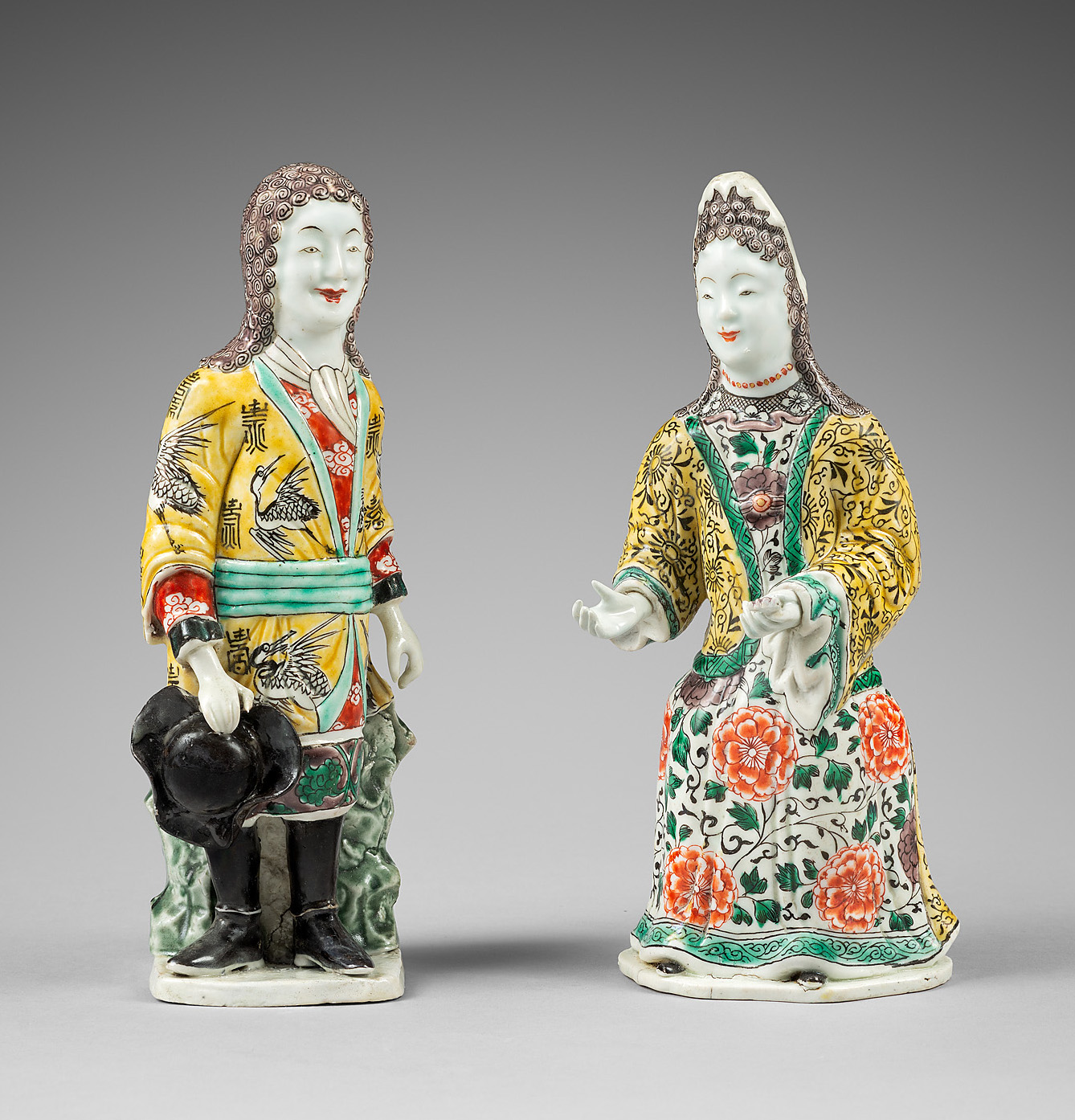Additonal informations :The engravings by Nicolas and Robert Bonnart (1637-1718 & 1652-1733 respectively) depicting important figures from the time of Louis XIV may have been the original sources, but some details should have modified over time with the emergence of different models. The Bonnart family was a particularly close-knit dynasty in Paris, centered around the shops of L’Aigle and du Coq, famous for their fashion engravings known as “bonnarts”. These creations were the work of four brothers – Nicolas I, Henri II, Robert and Jean-Baptiste. They concentrated themselves on the production and sale of engravings from about 1660 to 1762 in the rue St. Jacques in Paris which remained the center of the engraving business until the nineteenth century.
The gentleman typically refers to the Dauphin of France, son of Louis XIV. The clothing style is that of the French court of about 1700. The figure of the lady typically refers to “Madame de Maintenon” or “Madame de Montespan”, mistresses of Louis XIV
There are at least, three variations of these figures, one model of lady and two models of gentlemen, with different gestures and clothing. These sculptures represent the interactions between China and Europe at the beginning of the 18thcentury. They are made of porcelain, a material whose manufacturing secrets were not known in Europe at the beginning of the 18th century. Whereas numerous porcelain pieces of the 17th century portray Chinese figures, these rare sculptures belong to a small group of pieces representing some of the earliest Chinese porcelain depictions of Westerners made at Jingdezhen, a long standing-tradition that persisted throughout the 18th century.
Chinese painters also re-interpreted the French engraving model according to their own culture in the execution of the jacket of the gentleman. It is adorned in the Chinese style, featuring pseudo-Chinese characters and a motif of a crane in flight.
While high-quality porcelain imports from China were still quite limited at the dawn of the 18th century, these rare sculptures were primarily intended for the elite, individuals either connected to the trade between China and Europe or closed related to royalty.
Another engraving by the Bonnart brothers was used to decorate Chinese porcelain. Notably, there is a series of large blue and white chargers featuring musicians[1].
Other engravings by the Bonnart brothers depicting the “Three Graces”, and “L’odorat” (from the set of the “Five senses”), or “L’air” (from the set of “Les éléments”) were also used to decorate a model of a blue and white garniture of five vases.
The vibrant color palette of these groups is particularly rare. Among all the recorded groups currently in museums, they are the only known examples to be painted with yellow as the dominant colour[2].
[1] Jorge Welsh and Luisa Vinais, The RA Collection of Chinese Ceramics: A collector’s Vision, 2011, no. 332
[2] For the other model of gentleman decorated in yellow as dominant colour, see J.A. Lloyd Hyde, Chinese porcelain for the European market, 1956
